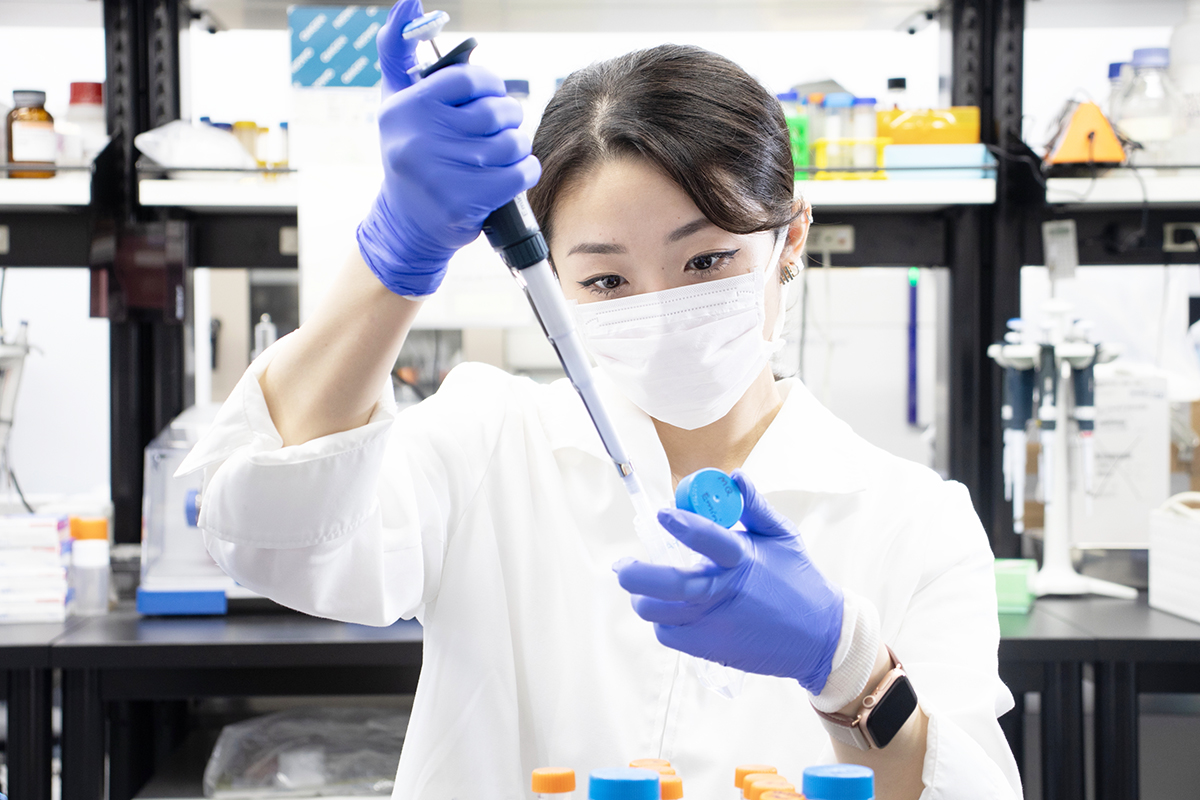
CiRA Reporter
CiRA Reporter

People
November 12, 2024
Striving for Clinical Application

Emiri Nakamura
Entering the world of scientific research
I was born in Yokohama, Japan, and moved to Hong Kong soon after. I attended an international school there and while many of my classmates were preparing for university education early on, I decided to take a gap year to take some time for myself.
During that time, I had the opportunity to assist in a research laboratory at a local university in Hong Kong, where I encountered scientific research for the first time. I learned how to conduct experiments in the lab every day and eventually, was able to perform PCR on my own. Conducting research in a lab was completely different from science lessons in high school. I also became aware of how successful research benefits society and the value of research output. I decided in that moment that I wanted to be a researcher.
I tend to act quickly when I make a decision. By the end of the six-month lab training, I had completed the enrollment process to attend the University of Exeter and moved to the U.K. the following month.
During my time at university, I wanted to improve my experimental skills, so I took a one-year leave of absence and worked as a technical assistant in the Megumu Saito lab at CiRA, as I had been interested in iPS cells for some time. After graduating university, I enrolled myself at the Graduate School of Medicine, Kyoto University, and obtained a master's degree at the Koji Eto lab and proceeded to the doctoral program. The transition was very smooth since I was already familiar with the lab.

Ph.D. student Emiri Nakamura conducts an experiment in an open lab at CiRA
iPS cell-derived platelets for basic research and patient care
It is expected that the number of blood donors will decrease in Japan due to the declining birthrate and aging population. Platelets, a type of blood cells, have a short shelf life of about four days. Therefore, it may become difficult to meet the demand for platelets through blood donations alone. In addition, platelets are produced from cells called megakaryocytes, which are relatively rare among blood cells.
The Eto lab has developed a system in which megakaryocytes, the precursor cells that produce platelets, are differentiated from iPS cells and these iPSC-derived megakaryocytes produce large amounts of platelets. Our goal is to deliver platelet products stably to individuals who are in need of platelets due to accidents or various diseases.
The development of the megakaryocytes is also beneficial for basic research. Megakaryocytes obtained from humans can be cultured in vitro but take about 16 days to produce platelets. Compared to this method of "obtaining megakaryocytes from the human body," "utilizing megakaryocytes derived from iPS cells” makes it possible to manufacture large amounts of platelets by culturing them for about 6 days. Shortening the culture period and ensuring the availability of materials have been vital for the progress of platelet research.
Elucidating the mechanism of platelet production
A major factor in the successful production of large amounts of the iPSC-derived platelets was the use of a bioreactor, a turbulent stress-inducing cultivation device. By subjecting megakaryocytes to physical stimulation in this device, we were able to produce more platelets in a shorter time period. (Reference: CiRA News, June 17, 2024, "Refining turbulent flow to scale up iPS cell-based platelet manufacturing")
However, the exact mechanism behind this significant improvement due to stimulation remains unclear. The goal of my research is to "uncover the changes that occur within the megakaryocytes due to this stimulation and how it affects platelet production." In particular, I am focusing on mitochondria, which are considered the "powerhouse" of the cell, especially for platelets without a nucleus, and the cytoskeleton, which undergoes changes before megakaryocytes start producing platelets. (The cytoskeleton refers to the protein filament structures that support the shape and movement of cells and facilitate the transport of substances within cells.)
Looking back on my journey so far
I had a lot of doubts about whether to pursue a master's degree simply because if I were to pursue graduate studies, I wanted to obtain a doctoral degree. There was a lot of pressure that I wouldn't be able to go back if this path wasn't for me.
Looking back, I would say to myself, "Try it first and see if you like it. If not, you can always quit." At the end of the day, this isn't the only path in life and I would rather regret the things I tried than the things I didn't. Now, I absolutely think that I made the right decision.
The Eto lab focuses on clinical application, and our research aims to deliver iPSC-derived platelets to patients. As an aspiring researcher, I too would like to actively conduct research with the goal of practical application in the medical field.
-
Stem Cell Reports Published December 2, 2021
Silencing of p53 and CDKN1A establishes sustainable immortalized megakaryocyte progenitor cells from human iPSCs -
CiRA News Published March 29, 2024
Discovering a new microRNA-regulated pathway to boost iPS cell-derived platelet production -
Nature Communications Published March 22, 2024
A let-7 microRNA-RALB axis links the immune properties of iPSC-derived megakaryocytes with platelet producibility
-
Interviewed and written by Asuka Morii
(Translation: CiRA International Public Communications Office)






















